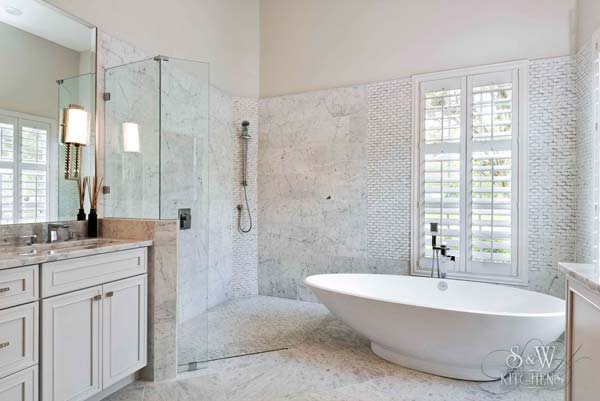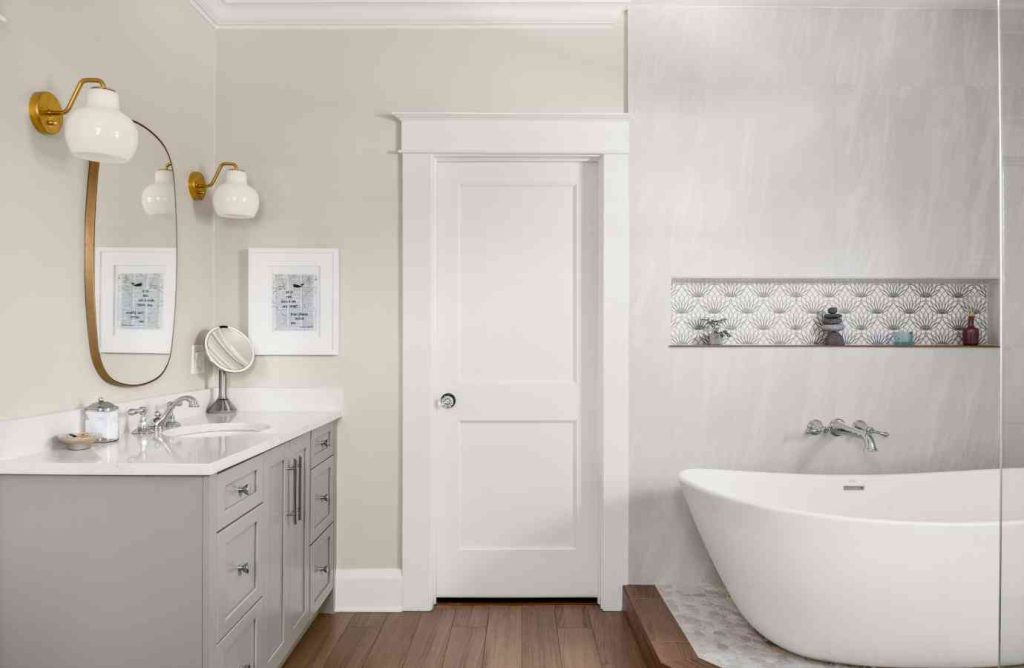Remodeling your bathroom adds value to your home, updates its style, and is better adapted to your current needs. For all these reasons, wet baths are becoming more and more desirable. However, many people are still not entirely familiar with this bathroom design concept.

Here we will explain exactly what a wet room is and consider some of the pros and cons to help you with deciding whether you would actually like to have one in your home.
The primary way that a wet room differs from a more conventional bathroom configuration is that instead of a specific enclosed shower cubicle, the entire room essentially acts as one big shower area.
However, this wide-open style does offer some design variations based on personal preference. For instance, with some setups, there is no separation at all between the shower and the rest of the room, but in others, a full or half door might be used to create the feel of a designated shower area, yet the flooring will be uniform throughout.
The reason that these types of bathrooms are suddenly becoming so popular is that they do have a few unique points that make them in ways superior to a more traditional bathroom space.
First, a wet room allows for a seamless look between the shower or bath area and the rest of the bathroom. It also eliminates the need for items like a shower tray. This means the shower space can be extended to include seating or even a double shower.

Being able to get rid of large dividing items makes this arrangement great for use in smaller bathrooms, so they both look and feel more spacious. An added benefit is that less overall storage makes you less likely to accumulate clutter in your bathroom, further opening out the room.
How to Save Costs on a Small Bathroom Remodel
Installing a wet room is also an efficient solution for older, less mobile members of the household. A level floor with no shower base or pan allows for easy wheelchair or walker access, gets rid of any potential trip hazards, provides a roomier shower experience, and enables more space for the installation of grab bars and railings.
A wet room also offers certain practical benefits: they are easier to keep clean than regular bathrooms due to the fact that there are fewer surfaces, fiddly spaces, and nooks and crannies to worry about.
Finally, wet rooms are considered to be contemporary and stylish bathroom alternatives, so having one installed could serve to raise the overall value of your house.
Yet, along with the advantages, there are some potential disadvantages to also be considered. These include the initial costs of waterproofing and wet rooms can require both more water and power than shower cubicles, so your utility bills might be higher. Some people may not feel entirely comfortable showering in a wide-open space.
Placement of accessories is important: the damp environment can mean towels and toilet rolls getting wet, so you will want to make sure that such items can be kept as far away from the shower as possible.
All in all, wet rooms are becoming a more cost-efficient, accessible, and attractive option for people looking to do something a little different with their bathroom. If this is something you are now looking to do, an increasing number of available designs means you should be able to achieve precisely the look and effect that you want.
